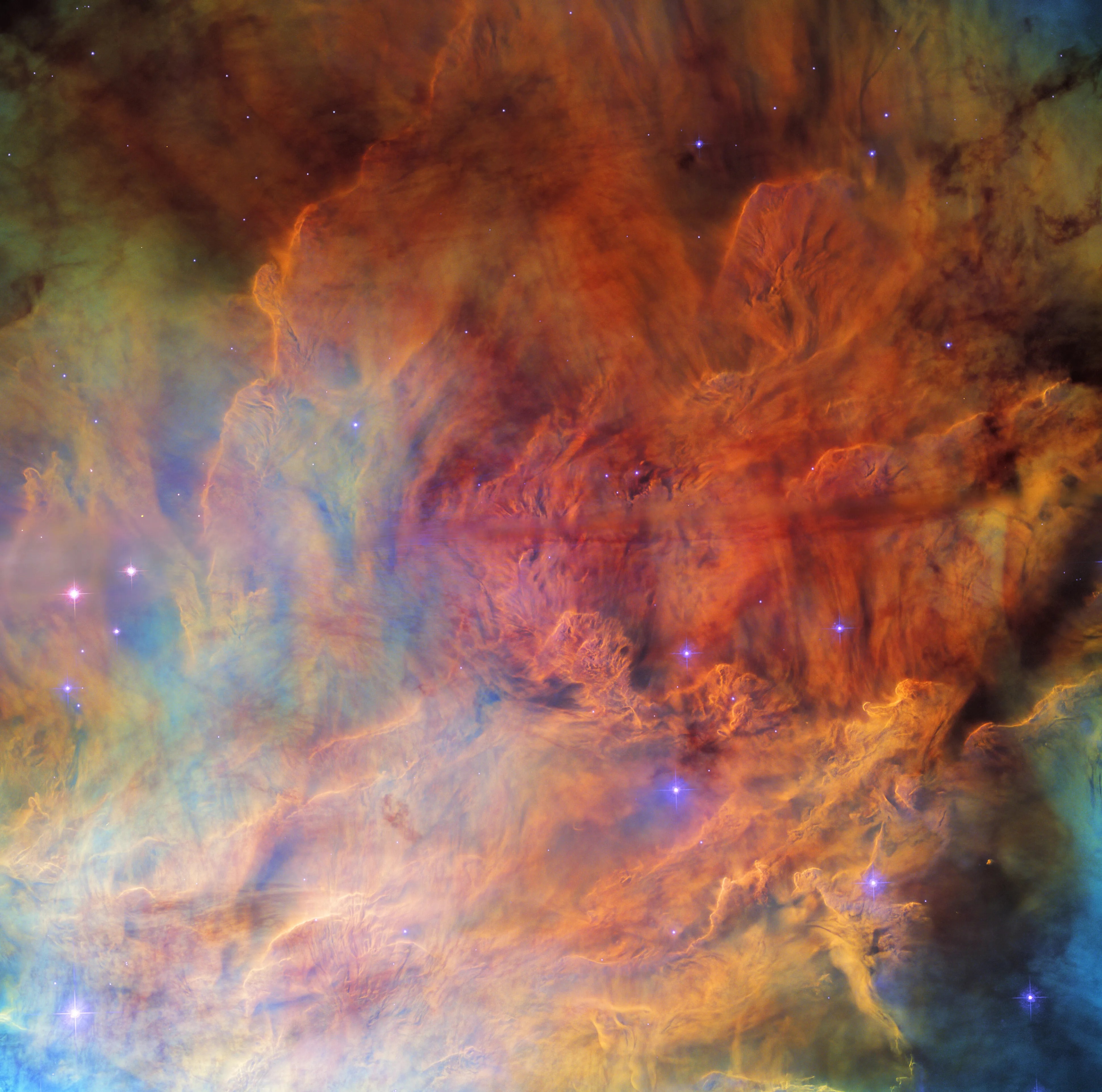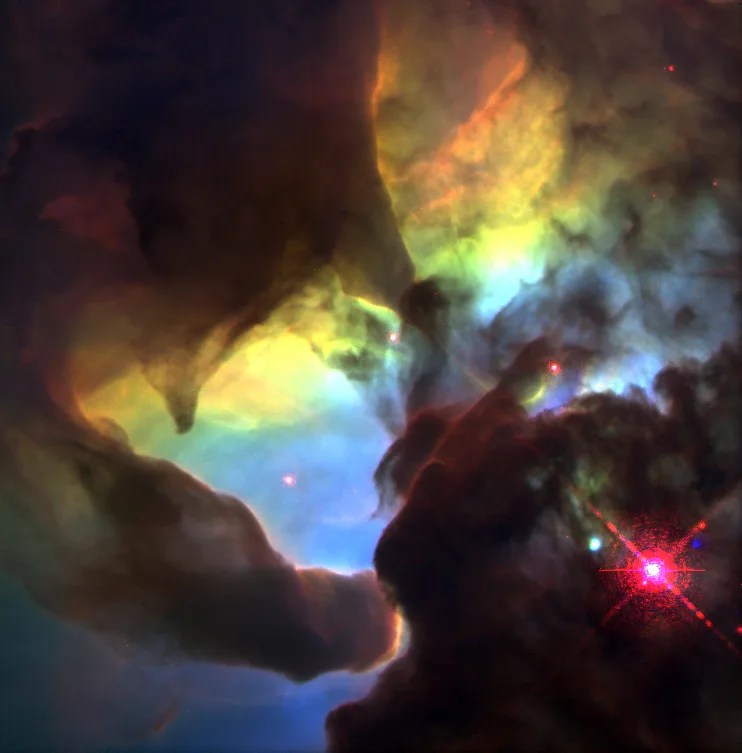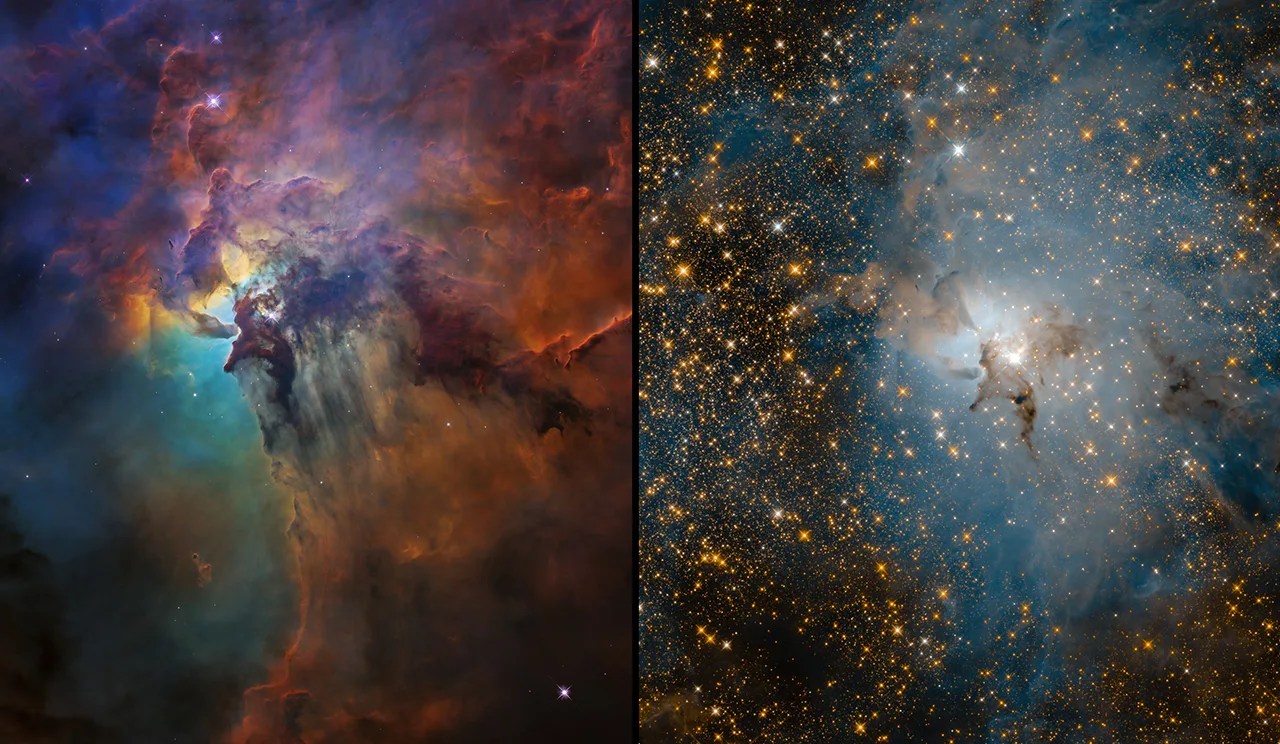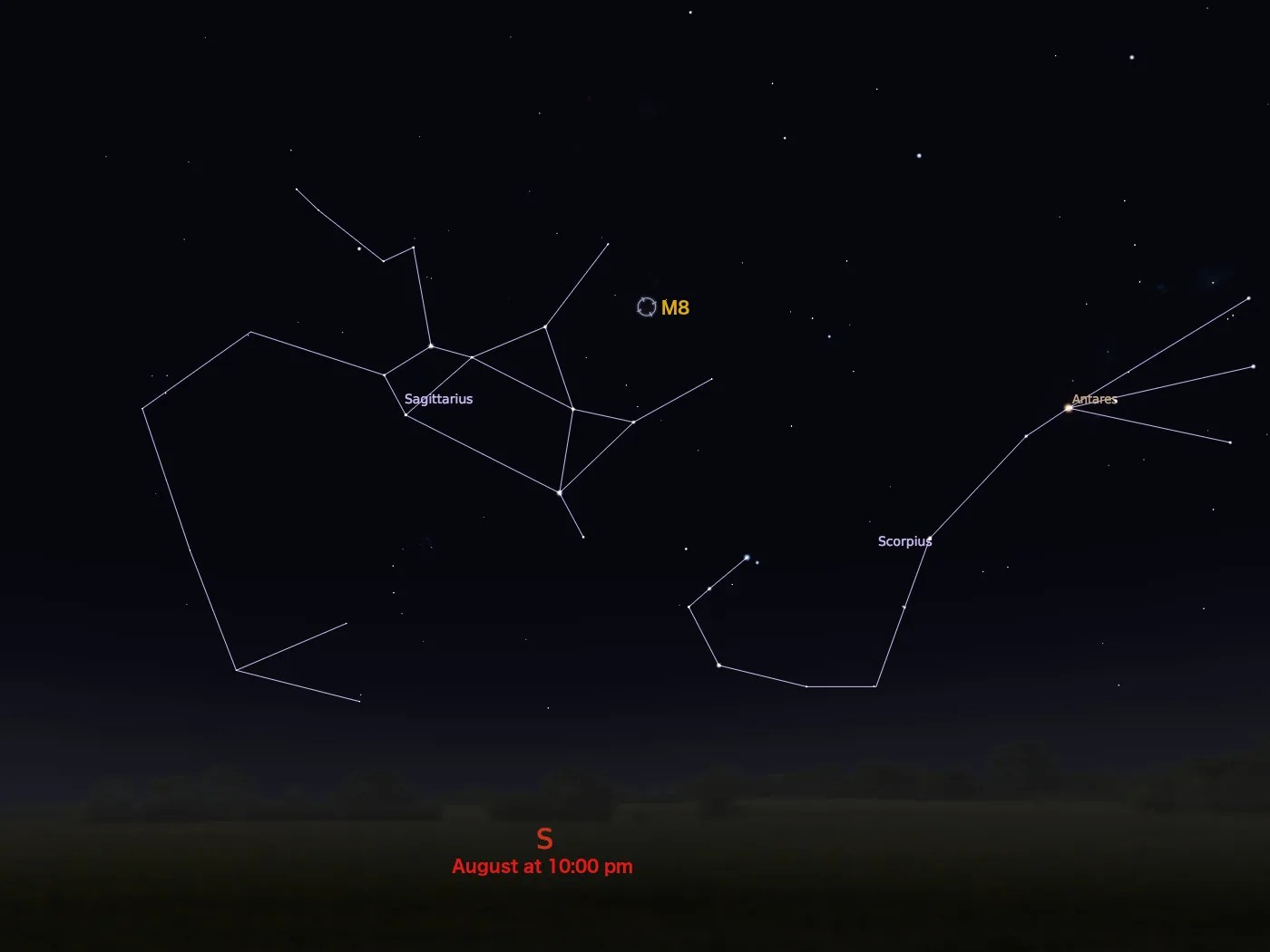Messier 8
Famously known as the Lagoon Nebula, Messier 8 shines by the ionizing ultraviolet radiation of its embedded young stars.
Distance
5,200 light-years
Apparent Magnitude
6.0
constellation
Sagittarius
object type
Emission Nebula

Commonly known as the Lagoon Nebula, M8 was discovered in 1654 by the Italian astronomer Giovanni Battista Hodierna, who, like Charles Messier, sought to catalog nebulous objects in the night sky so they would not be mistaken for comets. This star-forming cloud of interstellar gas is located in the constellation Sagittarius and its apparent magnitude of 6 makes it faintly visible to the naked eye in dark skies. The best time to observe M8 is during August.

Located 5,200 light-years from Earth, M8 is home to its own star cluster: NGC 6530 (not visible in the image above). The massive stars embedded within the nebula give off enormous amounts of ultraviolet radiation, ionizing the gas and causing it to shine.
In Hubble’s image of the center of the Lagoon Nebula, dust masks most of the objects within. This image maps the emission from the nebula’s ionized gas. Hydrogen is colored red and nitrogen is green. The blue-white flare at the upper left of the image is scattered light from a bright star just outside the field of view.

For more information on Hubble’s observations of M8, see:

Explore Hubble's Messier Catalog
The following pages contain some of Hubble’s best images of Messier objects.

Messier 1 (The Crab Nebula)
Better known as the Crab Nebula, Charles Messier originally mistook Messier 1 for Halley’s Comet, which inspired him to create…

Messier 2
Hubble's image of Messier 2 is comprised of visible and infrared wavelengths of light.

Messier 3
Messier 3 holds more than 500,000 stars.




